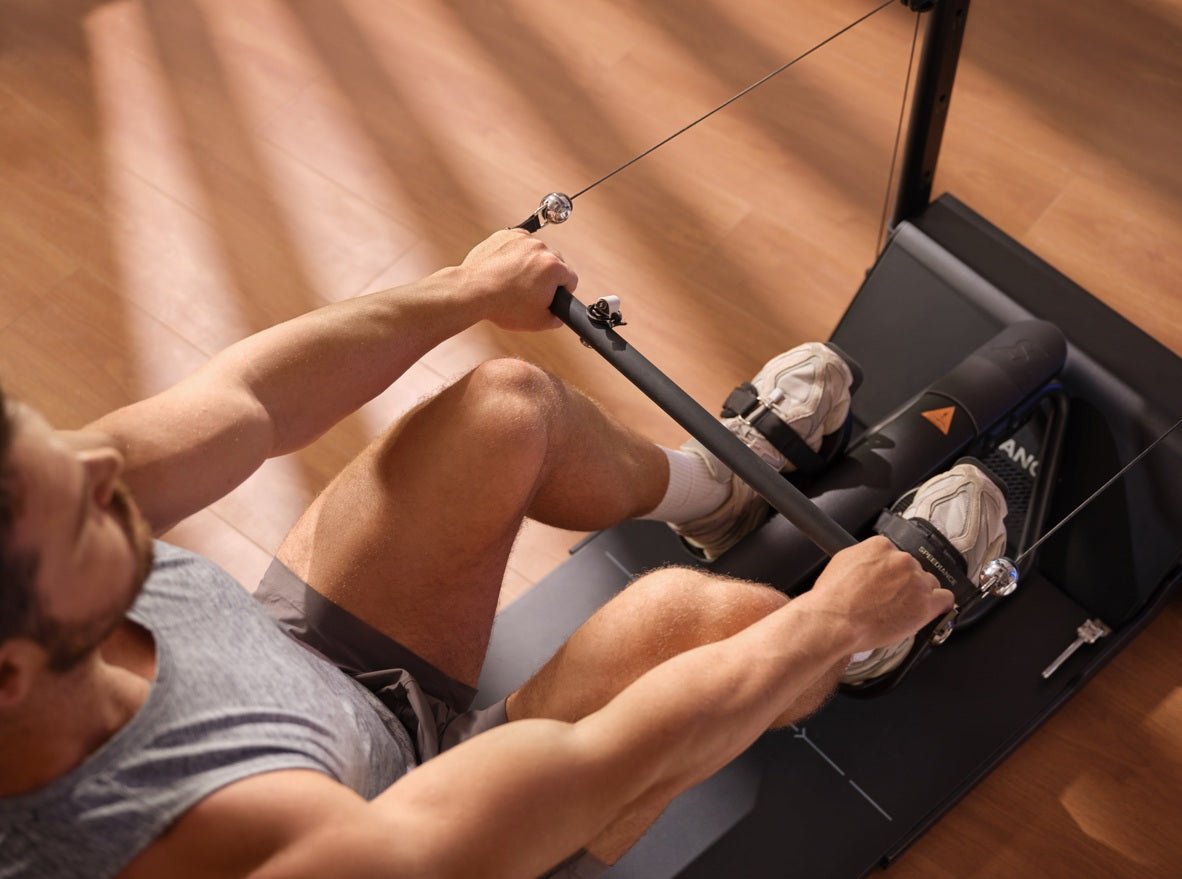

The Importance of Grip Variations in Strength Training
Grip plays a crucial role in strength training, affecting muscle activation, stability, and overall lifting performance. Whether performing pull-ups, deadlifts, rows, or bench presses, your grip variation can significantly impact which muscles are engaged.
By adjusting your hand positioning, you can target specific muscle groups, improve grip strength, and reduce strain on joints. Understanding how different grips work will help you optimise your workouts and enhance overall muscle activation.
How Grip Variations Affect Muscle Activation
Different grip variations influence how muscles are recruited, which means that altering your grip can enhance specific muscle activation patterns, reduce injury risk, and improve performance. Properly incorporating various grips into your workout routine will not only enhance grip endurance but also help optimise muscle engagement for different movements.
1. Pronated (Overhand) Grip
-
Hand Position: Palms facing down.
-
Muscles Targeted: Primarily activates the upper back, lats, forearms, and rear delts.
-
Best Exercises: Pull-ups, barbell rows, lat pulldowns, deadlifts.
-
Benefits: Increases back engagement while challenging forearm endurance. Enhances grip strength, preventing grip failure in high-rep sets. Useful for developing pulling strength and upper back definition.
2. Supinated (Underhand) Grip
-
Hand Position: Palms facing up.
-
Muscles Targeted: Emphasises the biceps, lower lats, and forearm flexors.
-
Best Exercises: Chin-ups, barbell curls, reverse-grip rows.
-
Benefits: Enhances biceps activation and allows for greater range of motion in pulling movements, leading to better overall muscle activation. Helps to improve elbow positioning for stronger lifts.
3. Neutral (Hammer) Grip
-
Hand Position: Palms facing each other.
-
Muscles Targeted: Distributes tension across the biceps, triceps, shoulders, and grip muscles.
-
Best Exercises: Hammer curls, neutral-grip pull-ups, dumbbell bench press.
-
Benefits: Reduces strain on the wrists and elbows, making it ideal for those with joint discomfort. Improves muscle balance between the upper arms and shoulders. Excellent for increasing pulling power while reducing strain on tendons.
4. Hook Grip
-
Hand Position: Overhand grip with the thumb locked under the fingers.
-
Muscles Targeted: Engages the grip muscles, forearms, and back more intensely.
-
Best Exercises: Deadlifts, Olympic lifts (snatch, clean & jerk).
-
Benefits: Enhances grip strength and stability, allowing for heavier lifts without grip fatigue. Ideal for lifters looking to maximize pulling power. Commonly used in Olympic weightlifting and powerlifting.
5. Mixed (Alternating) Grip
-
Hand Position: One palm facing up, one palm facing down.
-
Muscles Targeted: Provides stronger grip stability, engaging the biceps, forearms, and back.
-
Best Exercises: Heavy deadlifts, rack pulls, shrugs.
-
Benefits: Helps prevent barbell slipping, particularly during maximal lifts. Ideal for advanced lifters handling heavier loads. Helps offset bar rotation and grip fatigue.
6. False (Thumbless) Grip
-
Hand Position: Thumb rests on top of the bar instead of wrapping around it.
-
Muscles Targeted: Primarily works the forearms, triceps, and upper chest.
-
Best Exercises: Bench press, overhead press, lat pulldown.
-
Benefits: Increases shoulder and triceps activation, reducing wrist strain. Improves pressing movements by allowing a more natural hand position. Often used by advanced lifters looking to reduce wrist discomfort.
7. Wide Grip vs. Close Grip
Wide Grip:
-
Muscles Targeted: Greater emphasis on outer lats, shoulders, and chest.
-
Best Exercises: Wide-grip pull-ups, wide-grip bench press, snatch grip deadlifts.
-
Benefits: Increases lat and upper chest engagement, improving back width. Improves overall muscle activation in pulling and pushing movements. Helps with targeting width over thickness.
Close Grip:
-
Muscles Targeted: Focuses more on the biceps, triceps, and inner chest.
-
Best Exercises: Close-grip bench press, close-grip pull-ups, and diamond push-ups.
-
Benefits: Enhances arm muscle activation and reduces stress on shoulder joints. Allows for stronger triceps engagement in pressing movements. Improves overall pressing strength for lockout movements.
The Role of Grip Strength in Injury Prevention
Improving grip strength through varied grip training helps prevent injuries by strengthening the wrist, forearms, and connective tissues. Weak grip muscles can lead to imbalances, overuse injuries, and reduced lifting capacity. Implementing grip-specific training reduces stress on the joints and ensures better muscular endurance.
Enhance Your Training with Speediance Accessories
Maximising grip strength and muscle activation requires high-quality training accessories. Speediance offers premium fitness accessories designed to support strength development, stability, and endurance.
Recommended Accessories for Grip Strength & Performance
-
Speediance PowerGrip – Specifically designed to enhance grip endurance and forearm strength.
-
Squat Belt – Provides core stability and back support during heavy lifts.
-
Smart Bluetooth Ring Controller – Allows for effortless resistance adjustments while maintaining proper grip.
-
Belt Extender – Ensures a comfortable and secure fit for all body types.
-
Storage Rack – Keeps your fitness accessories organised and easily accessible.
Get Expert Guidance and Support
If you're looking for professional advice on strength training, grip optimisation, or proper lifting techniques, Speediance is here to help. Whether you're a beginner or an experienced lifter, our experts can guide you in selecting the best equipment and strategies to enhance your performance.
For personalised training solutions or inquiries about Speediance products, don't hesitate to contact us.
Final Thoughts: Optimizing Muscle Activation Through Grip Variations
Using different grip variations is one of the most effective ways to optimise muscle activation, prevent overuse injuries, and improve strength training performance. By experimenting with hand positioning, you can target specific muscle groups and break through plateaus while improving overall grip endurance.
Incorporating the right accessories, such as Speediance PowerGrip and Weight Lifting Belt, can further enhance your training effectiveness. These tools provide added grip support, improved lifting posture, and increased training efficiency.
Ready to take your grip training to the next level? Book a demo today and discover how Speediance Smart Gym can optimise your strength workouts.

